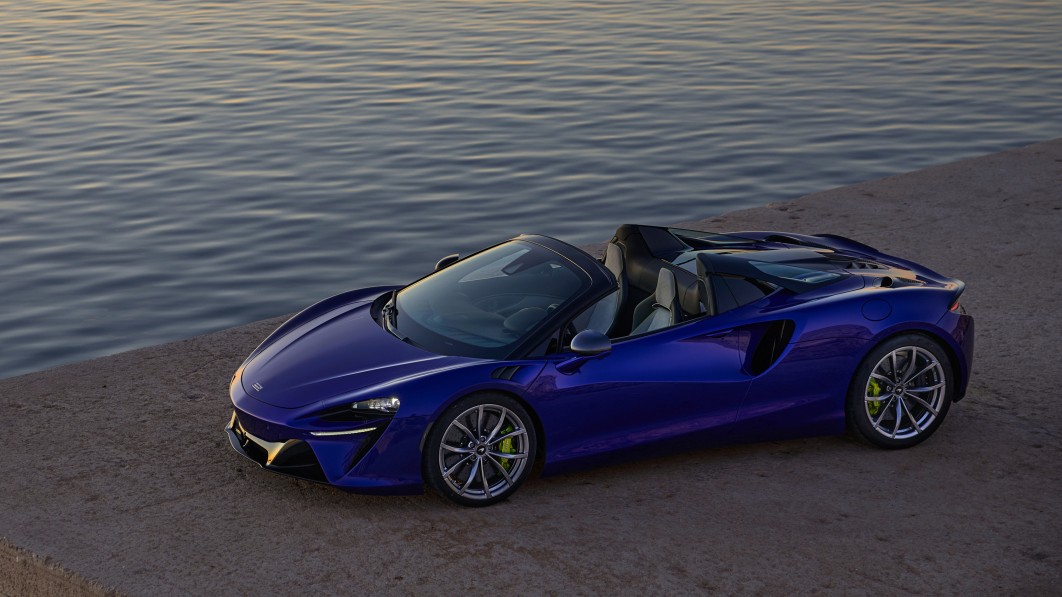For a few years now, the Aston Martin Vantage has been without V12 power. It’s technically been without Aston Martin power, too, since its twin-turbo V8 comes from Mercedes-AMG. But that may change in the near future based on these spy photos from the Nürburgring. They show a Vantage, but one that’s wider and with exhaust that suggest it may get a few more cylinders like its close cousin, the V12 Speedster.
Staring us down is the prototype’s enormous front grille, taller and wider than standard Vantage units. It’s flanked by two smaller inlets and underlined by an aggressive front splitter. The whole front seems to be wider, as evidenced by the mismatch around the front fender and hood. Speaking of the hood, there’s a big mesh “V” sitting on top to cover what are likely heat-extracting vents, which would probably be important for handling the heat from a twin-turbo 5.2-liter V12.
Changes at the back are a bit more subtle, but only a bit. The rear fenders have large fender flares, suggesting the production car will also be wider at the back with correspondingly larger tires. There’s a little gurney flap on the rear spoiler, so we may see a more aggressive spoiler in production. We also see a center exhaust instead of each of the dual pipes on the ends of the rear diffuser. This exhaust looks a lot like what Aston used on the V12 Speedster, itself based on the Vantage, but without the roof section. This is probably the strongest evidence that the car has the extra cylinders.
With Aston clearly knowing how to shove a V12 into a Vantage chassis, and the high-end sports car market’s never-satiated desire for more powerful and rarer items, a V12 Vantage seems like a slam-dunk product. The question will be, what output will it make. The V12 Speedster made 700 horsepower, but it was a limited-production special edition. The V12 Vantage could get the DB11‘s 630-horsepower variant to give the Speedster a bit of breathing room. And that would still be a nice power increase over the 503 horsepower of the regular Vantage. Based on these spy shots, we’d bet we have around a year before we see the production model, maybe a little less, maybe a little more.
Related Video:



